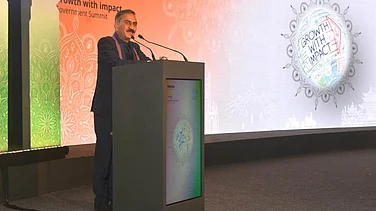Blue-collar jobs in delivery and logistics are still a stopgap for workers with gig staffing companies recording a churn in recruited partners every 4-5 months, according to experts.
Blue collar staffing for delivery and logistics, a relatively new job category, is seen by workers as a stopgap arrangement or means of generating supplementary income, say experts adding that many prefer not to take it up as a permanent career choice citing the "stigma" attached to these roles.
A Zinnov and Microsoft study in March noted that gig workers will play an instrumental role in India's USD 5 trillion economy, with the current 77 lakh gig workforce set to triple to 2.3 crore by 2030, generating USD 250 billion.
Out of the 13.5 lakh enrolments on work-as-a-service platform Awign, 18.1 per cent are in blue-collar roles.
AI-driven hiring automation app, Vahan.ai, sees the highest demand for blue-collar workers from Hyderabad, Chennai, Bangalore, and Mumbai with substantial market share from tier 2 and tier 3 cities — Coimbatore, Jaipur, Lucknow, Amritsar, Chandigarh, and Ahmedabad.
Vahan.ai contributes to 50 per cent of a leading food delivery player’s delivery partners, founder and CEO Madhav Krishna said.
“We work with every large delivery company today, being the largest recruitment vendor for Zomato and Zepto. The number of gig workers is about 4 to 5 lakh monthly, with 15 to 20 per cent increase annually,“ Krishna notes.
He said there is “no slowdown” in the delivery space despite macroeconomic conditions. “We onboarded 86,000 new riders, adding to the 2.25 lakh riders onboarded previous year. Our referral program had 7 lakh touchpoints this year,” Krishna added.
Blue collar staffing for delivery and logistics is relatively new, with about 60 per cent of workers seeing them as stopgap arrangements, he points. There is also a stigma attached to it, Krishna adds.
“In the gig economy space, specifically for delivery, at least 50 to 60 per cent of folks who take up these jobs see them as stopgap arrangements or potential ways of generating supplementary income. Some of our workers have told us that they won’t get married if they do this job.”
The earnings, however, may go up to Rs 50,000-60,000 a month for some of these workers, he points. There has been a surge in demand and supply for gig workers post-pandemic.
“Since COVID, we have seen almost a 3 to 5x increase in volumes,” Krishna notes.
Awign saw 5.75 lakh enrolments on its platform pre-pandemic, which increased 34 per cent from 2020 to this year. Amid layoffs in several roles, there is a surge in gig workers staffing since there is no long-term commitment for both companies and workers, notes Awign’s co-founder and chief business officer Gurpreet Singh.
“There is surge for people reaching out to be hired on hour basis. Tech hiring is happening on a 3-6 months contract. As a part-time worker or freelancer, there is a larger opportunity pool. More and more functions like exam invigilation are being gigified, with 40 per cent of the full-time workforce now gigified.”
Most blue-collar workers have not adapted to technology and rely on their friends and relatives for jobs, Krishna notes. Vahan.ai is now working on tapping into these networks for job discovery. Krishna, who comes with a background in AI and machine learning, sees the rise in generative technology as a democratising process.






























